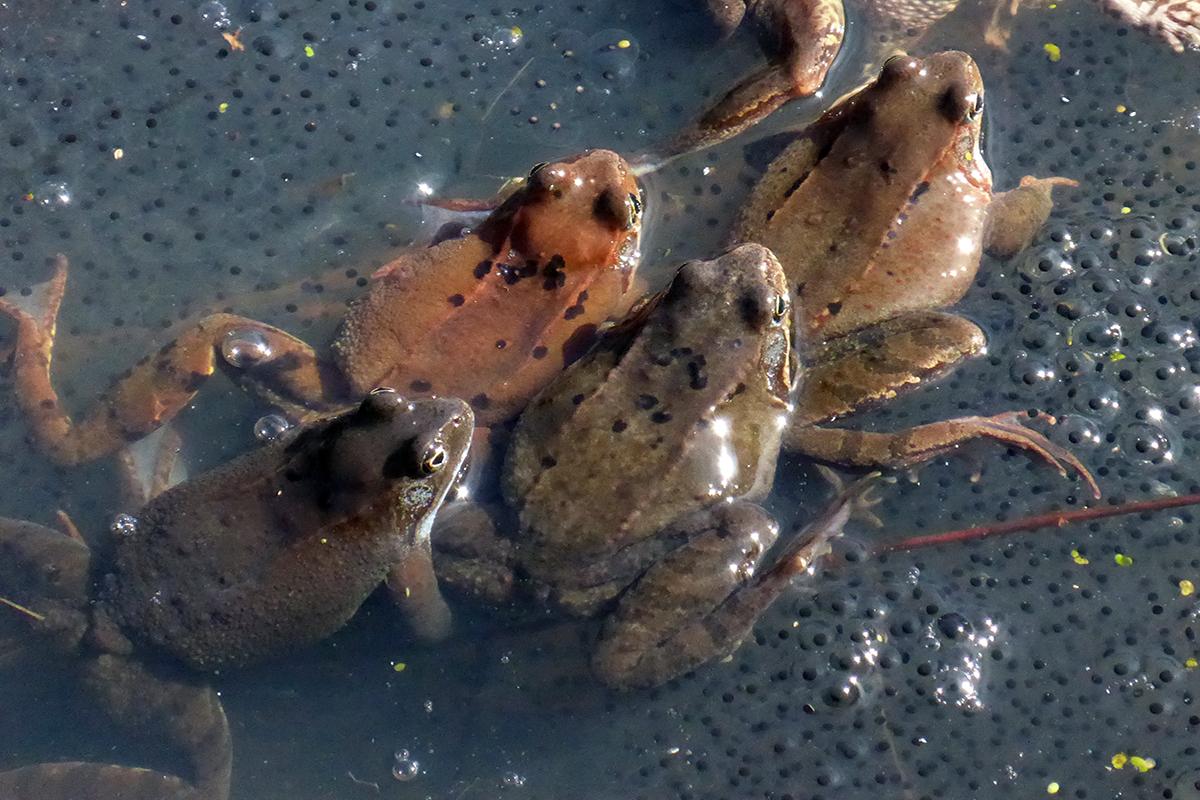Questions to be investigated
The main question of my research is the evolution of life history strategies, where I use the European Common Frog (Rana temporaria) as a model system. Life history strategies are based on decisions made by an individual, how to allocate energy (resources) to growth, development and reproduction to maximize individual fitness. Hence, a large number of different strategies have evolved between and within species. I will take a closer look at mating tactics, genetic variability, environmental influences and landscape conditions on life history strategies and dispersal abilities in a cultural landscape. Questions to answer will be if individuals with similar traits are more likely to mate (assortative mating) or how mothers influence the metamorphic traits of their progeny and if multiple paternity adds variability to that traits. Additionally, I want to know how local weather conditions influence population fluctuations and body condition in different years.
Methodology
Our group has been monitoring natural common frog (Rana temporaria) population for the past 10 years. Therefore, I have access to an enormous dataset which bears the potential to understand the processes that could lead to the evolution of life history strategies. I will use genetic markers (microsatellites) to identify offspring from single clutches (mothers) to investigate the influence of genetic background on metamorphic traits. Additionally, I will use these markers within a network of different ponds to investigate how human land use is structuring populations of amphibians. Therefore I will use the methods of landscape genetics.
Partners
The project is a collaboration with Prof. Dr. Heike Feldhaar from the University of Bayreuth (Population Ecology of Animals).
Funding
Elsa-Neumann PhD scholarship from the State of Berlin
